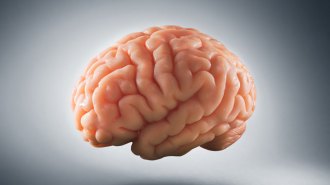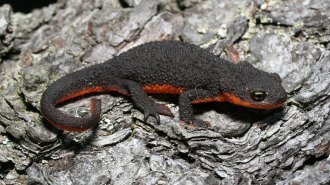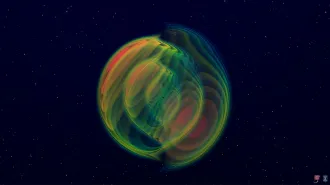Uncategorized
-
 Health & Medicine
Health & MedicineCOVID-19 is hitting some patients with obesity particularly hard
Doctors say some of their sickest COVID-19 patients are young and obese. One study shows they have higher rates of hospital admission and death.
By Dawn Fallik -
 Life
LifeHow much space does nature need? 30 percent of the planet may not be enough
Nations are drafting a plan to protect 30 percent of Earth by 2030 to save biodiversity. The number reflects politics more than scientific consensus.
-
 Health & Medicine
Health & MedicineMore evidence hints that hydroxychloroquine doesn’t help treat COVID-19
A malaria drug showed no benefit over standard care in two preliminary studies examining how well hydroxychloroquine works against the coronavirus.
-
 Neuroscience
Neuroscience‘The Idea of the Brain’ explores the evolution of neuroscience
Despite advances, much about the human brain is still a mystery, a new book shows
-
 Astronomy
AstronomyHigh-speed gas collisions prevent star birth in galaxies’ bars
The spiral galaxy NGC 1300 makes few if any stars in its bright bar. Simulations suggest gas clouds colliding at high speed stunt star formation.
By Ken Croswell -
 Space
SpaceInterstellar comet Borisov has an unexpected amount of carbon monoxide
The second known visitor from outside the solar system has three times as much CO relative to H2O than any comet seen in the inner solar system.
-
 Planetary Science
Planetary ScienceUnlike Earth, the gases in Venus’ atmosphere aren’t uniformly mixed
Measurements of Venus’ atmospheric nitrogen show that a planet’s upper atmosphere doesn’t necessarily match the lower atmosphere.
-
 Life
LifeToxin-producing bacteria can make this newt deadly
Bacteria living on the skin of some rough-skinned newts produce tetrodotoxin, a paralytic chemical also found in pufferfish.
-
 Physics
PhysicsGravitational waves have revealed the first unevenly sized black hole pair
For the first time, LIGO and Virgo scientists spotted gravitational waves produced when one big black hole merged with a smaller one.
-

-

Susan Milius, your guide to the peculiarities of nature
Editor in chief Nancy Shute writes about the rambling route Susan Milius, life sciences writer, took before landing at Science News. And how we're all richer for her writing.
By Nancy Shute -
 Humans
HumansHere’s where things stand on COVID-19 tests in the U.S.
Government officials are weighing how to loosen social distancing measures across the United States, but that hinges on widespread COVID-19 testing.